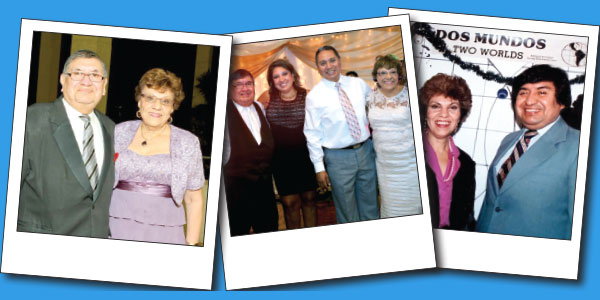
Katherine Diaz
As the number of Hispanics continues to grow, Kansas City area schools are trying to address a growing concern nationwide: a racial diversity gap among teachers.
A 2016 U.S. Department of Education report found that, in 2012, 51 percent of all American elementary and secondary public-school students were white, and 82 percent of public schoolteachers were white. By contrast, 24 percent of all students and only 8 percent of the teachers were Hispanic, the study showed.
Devon Teran, a Latino educator for 11 years and the Guadalupe Centers High School principal, is among those who strongly believe that having Hispanic teachers matters.
“There’s some research that shows that when kids see themselves reflected in the classroom, they do better,” Teran stated. “We don’t necessarily know, (but) I tend to assume that it’s more about when you have somebody that takes a deep personal interest in you (that) you do better.”
Teran said he sees more area Hispanics thinking about pursuing a teaching career, but admits it is not an initial point of interest. He thinks it will take some time for teaching staffs in Kansas and Missouri to diversify.
The significance of having racially diverse educators, specifically Hispanic ones, is that it gives Hispanic students one less barrier for to cross.
“It makes it that much easier to secure oneself (as a student) in the narrative that the teacher is casting,” Teran explained. “If the teacher says, ‘We have to do these things because they’re going to help your future – and this is where I support you,’ well, it’s easier for that kid to see (himself or herself) in that story, if it’s coming from somebody that culturally understands you.”
Teran emphasizes that, more importantly, it is how teachers care for their students and that students know their teachers care about them.
“I’m in a spot where 94 percent of my students are Hispanic, but only 10 percent of Kansas City is Hispanic – and only 6 percent of Missouri is Hispanic,” he said, mentioning that less than a third of his teaching staff is Hispanic.
Although there are not many area Hispanic teachers, there are programs geared toward recruiting Hispanic teachers, such as the Kansas City Teacher Residency program. Its goal is to draw teachers who might not otherwise go into teaching.
With the help of such programs and organizations focused on decreasing the racial diversity gap among educators, students will be able to view themselves in a different light, Teran hopes.
“What I hope for, having more Latino/Hispanic teachers in the classroom for years to come, is that kids get to experience (being themselves) everywhere – that they get to be who they are and they’re not defined by their heritage,” he stated. “Their heritage is important, and we want them to be proud. But I hope they get to be known for what they are interested in as well – not just what the stereotypes are in the culture group or what their ethnic traditions might be.”
Note: For more information from the Department of Education study, visit https://www2.ed.gov/rschstat/eval/highered/racial-diversity/state-racial-diversity-workforce.pdf.
_____________________________________________________________________________________________
Bajo índice de maestros hispanos es una preocupación creciente
A medida que el número de hispanos continúa creciendo, las escuelas del área de Kansas City están tratando de abordar una creciente preocupación a nivel nacional: una brecha de diversidad racial entre los maestros.
Un informe del Departamento de Educación de EE.UU. de 2016, encontró que, en 2012, 51 por ciento de todos los estudiantes de escuelas públicas de primaria y secundaria eran blancos, y el 82 por ciento de maestros de escuelas públicas eran blancos. En contraste, el 24 por ciento de todos los estudiantes y sólo el 8 por ciento de maestros eran hispanos, según el estudio.
Devon Terán, educador latino por 11 años y director de la Escuela Secundaria Guadalupe Centers, se encuentra entre los que creen firmemente que es importante tener maestros hispanos.
“Hay algunas investigaciones que muestran que cuando los niños se ven reflejados en el aula, les va mejor”, Terán indicó. “No necesariamente lo sabemos, (pero) tiendo a suponer que es más sobre tener a alguien que se interesa profundamente por ti (lo que) te hace mejor”.
Terán dijo que ve que más hispanos del área están pensando en una carrera de docente, pero admite que no es un punto de interés inicial. Piensa que tomará algún tiempo para que los profesores de Kansas y Missouri se diversifiquen.
La importancia de tener educadores racialmente diversos, especialmente hispanos, es que les da a los estudiantes hispanos una barrera menos para cruzar.
“Lo hace mucho más fácil ponerse uno mismo (como estudiante) en la narrativa que el maestro está seleccionando”, explicó Terán. “Si el maestro dice, ‘Tenemos que hacer estas cosas porque van a ayudarte en tu futuro, y aquí es donde te apoyo’, bueno, es más fácil que ese niño se vea a sí mismo en esa historia, si viene de alguien que te entiende culturalmente”.
Terán enfatiza que lo que es más importante es cómo los maestros se preocupan por sus estudiantes y que los estudiantes sepan que sus maestros se preocupan por ellos.
“Estoy en un lugar donde el 94 por ciento de mis estudiantes son hispanos, pero sólo el 10 por ciento de Kansas City es hispano, y sólo el 6 por ciento de Missouri es hispano”, dijo, mencionando que menos de un tercio de su personal docente es hispano.
Aunque no hay muchos maestros hispanos en el área, hay programas orientados a reclutar maestros hispanos, como el programa de Residencia de Maestros de Kansas City. Su objetivo es atraer profesores que de otro modo no podrían dedicarse a la enseñanza.
Con la ayuda de tales programas y organizaciones enfocadas en reducir la brecha de diversidad racial entre educadores, los estudiantes podrán verse a sí mismos desde una perspectiva diferente, Terán espera.
“Lo que espero, al tener más maestros latinos/hispanos en el aula durante los próximos años, es que los niños experimenten (ser ellos mismos) en todas partes, que sean quienes son y que no estén definidos por su herencia”, explicó. “Su herencia es importante y queremos que estén orgullosos. Pero espero que también sean conocidos por lo que les interesa, no solo por los estereotipos de su grupo cultural o por sus tradiciones étnicas”.
Nota: Para más información sobre el estudio del Departamento de Educación, visite https://www2.ed.gov/rschstat/eval/highered/racial-diversity/state-racial-diversity-workforce.pdf.










